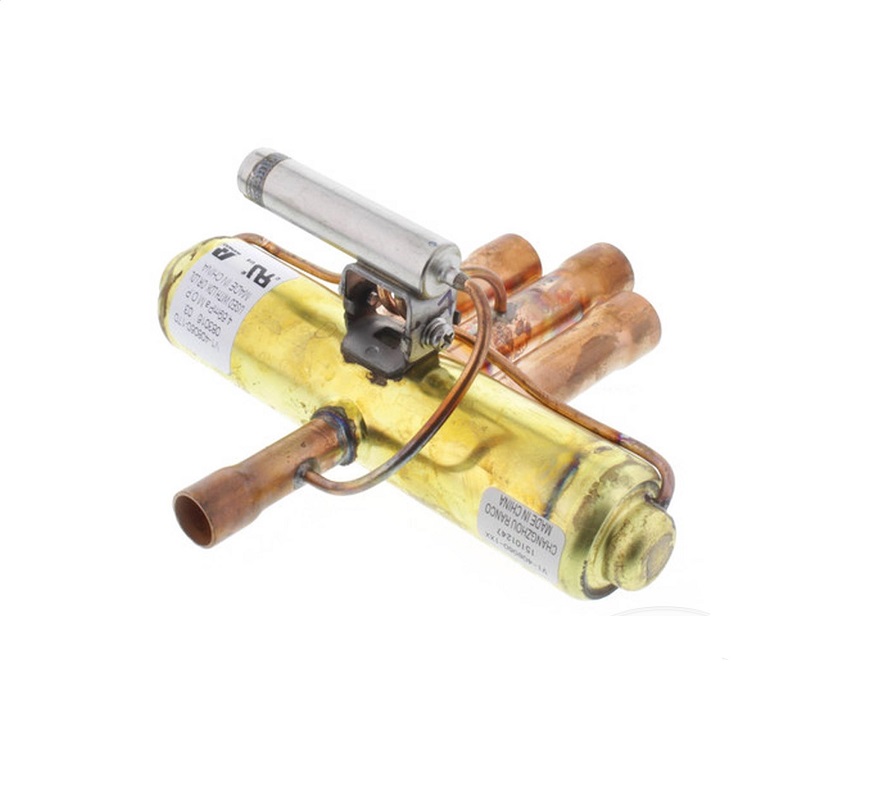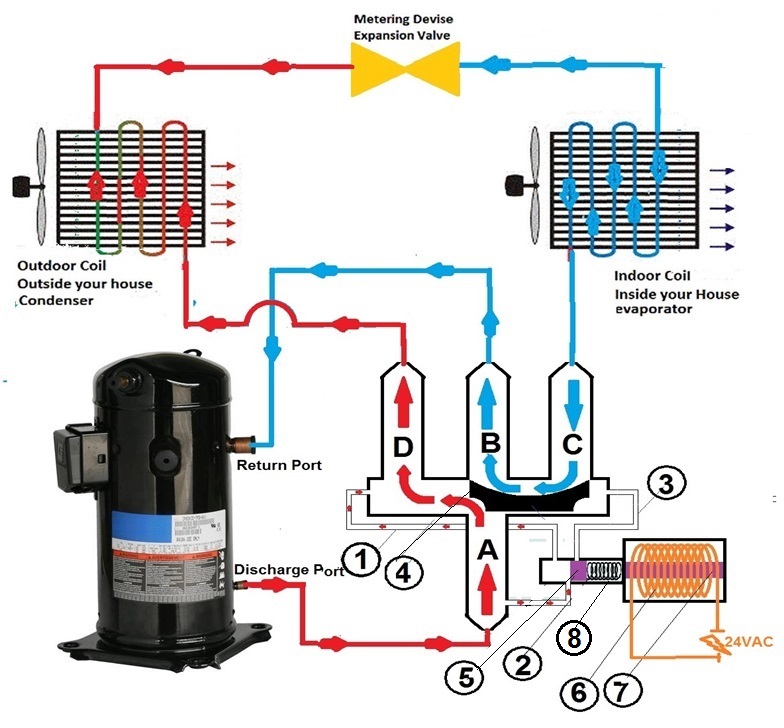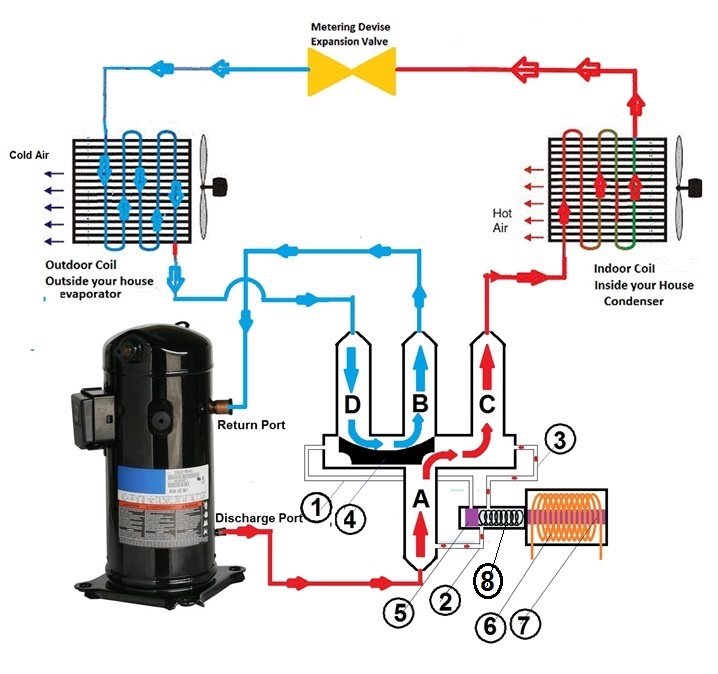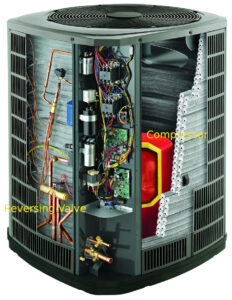Heat pump reversing valve is a component of the heat pump that makes it different from a standard air conditioner. It can be inferred from the name that the reversing valve has the responsibility of changing the direction of the flow. A heat pump could take the outside heat to the inside during colder days or take the inside heat outside in hotter days, and this becomes possible using the reversing valve.
Linquip is where you can easily find the best solution for your HVAC needs, and by reading this article you can get a good sense of an essential part of your heat pump system.
⇒ View a Comprehensive List of Valves and Their Suppliers ⇐
The role of a heat pump reversing valve
The reversing valve on a heat pump can alter the direction of refrigerant flow by means of an electrical magnet. This electro-mechanical device is a valve that is energized when electrocuted. When energized the valve opens, letting the refrigerant pass through. This would lead to the cooling mode of the heat pump. When the valve is de-energized it closes, blocking the flow of refrigerant. The heat pump would be in its heating mode at this time.
The heat pump reversing valve is comprised of four capillary tubes, for which they are called four-way valves. There is also an electric coil, electric magnet, spring, slider, and block installed on the reversing valve.
Energized heat pump reversing valve – cooling modeThe compressor’s return, which has the low pressure refrigerant, is always connected to tube B and its high pressure discharge of refrigerant is connected to tube A. Now, when the electrical coil is energized for the cooling mode of the heat pump, it would energize the magnet pulling the block on capillary tube 3, resulting in compression of the spring.
At this point, capillary tube 2 (connected to the high pressure tube A) becomes connected with capillary tube 1. This leads to the slider being pushed to the right side, allowing the high pressure refrigerant flow from tube A to tube D that takes it to the outdoor coil then to the indoor, and then from tube C to tube B and back to the compressor’s return port.
De-energized heat pump reversing valve – heating modeWhen the heat pump reversing valve is de-energized during the heating mode of the pump, the spring would decompress, pushing the block towards blocking capillary tube 1 this time. The flow of the high pressure refrigerant would be from capillary tube 2 to capillary tube 3, pushing the slider to the left, taking the refrigerant from tube A to tube C which takes it to the indoor coil heating the interiors and then to the outdoor coil, after that tube D, and finally tube B which takes the flow to the return port of the compressor.
Location of the reversing valve on a heat pump
The heat pump reversing valve is most likely placed near the compressor. The following image illustrates the location of this device on a heat pump.
Diagnose and Fix heat pump reversing valve
We have learned by now that the double application of heat pumps for cooling and heating is possible only because of the heat pump reversing valve. However, this component could also suffer from damage. Despite damage, it might require a replacement, but there are also a lot cases when you can fix what is wrong with this device.
The important point when one intends to fix a problem with a reversing valve is to know about when there is a problem, and how it could be fixed. There are signs that indicate the fault is raised due to a problem with the heat pump reversing valve.
The following signs indicate when the problem is with the reversing valve, and if such problems were not found, then you should check other parts to find the source of the problem.
See All Knife gate Valve for Sale
Stuck valve
One of the common problems occurring in the heat pump reversing valve is for it to get stuck. When the device does not seem to alternate between cooling and heating, the problem is most likely with the reversing valve.
One of the reasons for this issue is that the valve is stuck because of dirt somewhere in the device. Some taps on the device with a plastic object should do the trick of releasing the valve. You might also need to clean the capillary tubes. Some physical damage such as burnt points, oxidation, holes, etc. could also be the reason for the valve to get stuck. In such cases there might be a need for replacement.
Defective coil
When the coil does not work properly, it cannot correctly energize the valve. When the voltage of the solenoid is not as much as it should be, it is most likely that the coil is faulty, which requires replacement. Even if the voltage is the right amount, you need to make sure that it is a magnetic field that has energized the valve. If it is not magnetically energized, then the reason is due to the disconnection of a wire linking the electric part of the valve with the solenoid. If the problem still exists, then you better consider replacing it.
Leaking valve
When the refrigeration system is not working properly, one possible reason could be that there is no right refrigerant charge in the system and that leads to the malfunctioning of the heat pump reversing valve. If the heat pump does not show any signs of leaks, then the problem is within the compressor or the reversing valve.
If there is leaking with the compressor, there would be some noise from the compressor, and when no such a thing is observed, the problem is in the reversing valve. This means that some cooling agent is being lost at the heat pump reversing valve that lowers the performance of heating or cooling, as well as leading to the device getting stuck.
By comparing the temperature difference between the discharge line and suction line of the valve during cooling mode, or the temperature difference between the suction line from outside to the inside of the conditioned area and the bottom suction line during the heating mode, both of which should not exceed 3ºF, one can decide to replace the heat pump reversing valve.
More on heat pump reversing valve
Click here to learn more about the operation of heat pump reversing valves. You can also see this video to learn how to solve the common stuck reversing valve issue.
Buy Equipment or Ask for a Service
By using Linquip RFQ Service, you can expect to receive quotations from various suppliers across multiple industries and regions.
Click Here to Request a Quotation From Suppliers and Service Providers
Read More on Linquip






